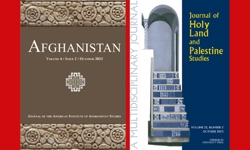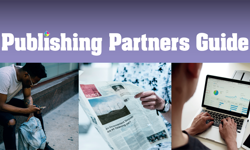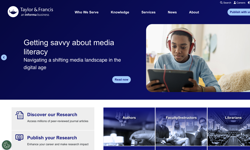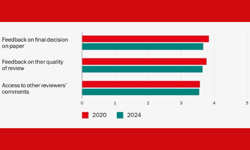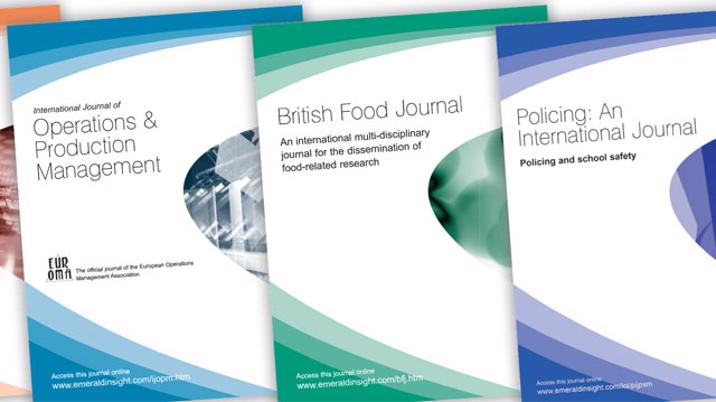
The group has built a solid reputation as a reliable disseminator of evidence-based, peer-to-peer reviewed research in a wide range of specialist fields.
And if all that sounds a bit worthy, well, it is.
Content is seen as a scientific record, one that often marks the progress of meticulous research. In certain fields, such as genomics, that progress can happen on an almost monthly basis; in others, progress is almost glacier-like: some maths theorems from the 1920s, for example, are still seminal today.
The company was established in 1967 by a group of 50 academic entrepreneurs in Bingley, West Yorkshire, where the group still has its HQ. It began with just one journal, Management Decision, which it bought for £1. Its aim: to “champion new ideas that would advance the research and practice of business and management”.
Today, the group operates globally, publishing more than 300 journals and 200 books a year – some 12,000 articles – in the fields of management, business, education, library studies, health care and engineering.
The need to update the way the group curates this broad-ranging content and to make it even more accessible to its discerning audience were central drivers behind the rebranding at the start of this year. The digital offering was the main focus.
Publishing director Tony Roche says the rebranding was very much about communicating Emerald’s values more assertively – its independence and heritage as a champion of research and ideas in applied fields. Qualities that perhaps have never been more relevant.
The re-styling, he insists, was about far more than simply a 50th anniversary fillip.
“It wasn’t really about the content itself,” Roche says. “But more the skinning of the website and about accessibility.”
Search is key
In the scholarly publishing arena, discovery through search is the absolute priority.
Primarily customers come to Emerald’s content through the 5,000 universities and corporate institutions that subscribe to its portal and offer library users direct access to the company’s articles and publications. Other users will arrive from external searches, through Google, say, or its academic search-tool offshoot, Google Scholar.
And, of course, the web has revolutionised the process of accessing the latest research data.
“So, concepts like SEO are really important to publishers in our sector – we are aiming to make our authors’ work as visible as possible,” explains Roche.
It’s somewhat ironic then that many thousands of readers, seamlessly accessing Emerald’s content in libraries around the world, may not see the company’s brand at all.
“End users often in the academic sector, don’t even know that there’s a transaction because the library pays for the access,” says Roche.
Content marketing
It’s no longer enough, however, to passively wait for your content to be found, even if it is optimised for search; these days, academic publishing demands a more proactive approach.
Roche explains, “For example, you can now buy single articles from us in what we call pay-per-view. And the other thing we, as well as other publishers, are doing increasingly is content marketing. So, we’re actually pushing content, or excerpts of content, out to the marketplace as teasers to bring people back to our platforms.”
The company now happily goes looking for readers via non-academic channels.
“Just because many of them are in the academic space, they also have personal lives,” Roche says. “So, they’re on Facebook like we all are. Many are on LinkedIn, many on Twitter. And we look at other sectors and see how they’re interacting with the customer base and we have to learn from that, and we have done.”
The key, though, Roche stresses, is that the brand is a proxy for the quality of the content.
Although the company was founded with a focus on the business sector, only around half of what is now produced would typically be taught in business schools – such things as strategy, leadership, entrepreneurship, Roche says.
“The other half of our programme is more applied areas like engineering, tourism and hospitality, health and social care, education. Rigorous research that has applied value.”
Differentiating any brand and maintaining credibility in a marketplace of deafening content, much of it free, remains a key challenge for any publisher, but especially so for a company like Emerald, which has to be extremely sensitive to anything that could dent its prestige.
Which raises the question: how does the group go about deciding a publication or a mere article is worthy of its imprimatur; how does it decide on an acquisition?
“We have a whole gamut of subject areas and we’re not project researchers, so we work very closely with scholars in academia,” Roche says. “Each of our publications has a scholarly editor, an academic editor, and an editorial advisory board, which would be a mix of academics and consultants or practitioners.”
And for title acquisitions, Roche explains, “We look at things like funding trends, which areas are emerging in the research field, which areas are getting more teaching, are seeing more students going into them.
“We look at changes in the market first of all to steer our own publications because they don’t stay static, they have to evolve. And we look to identify either competitive products that we might be able to acquire, or else launch opportunities. We also launch new journals often in partnership with institutions.”
Industry consolidation
This publishing sector, though, is changing rapidly, mainly as a result of consolidation. That means publishing behemoths do dominate – publishers such as Elsevier with 2,500 journals and more than 33,000 book titles, as well as other big names, like Wiley and Springer.
“In the last 20 years, there has been so much consolidation that there are fewer and fewer independent small players,” says Roche. “A lot of our growth is through launch and partnership now and we offer new business models around that.
“We have a model now called Emerald Publishing Services and we partner with institutions like universities or associations to launch new journals. We do it on a kind of sponsored basis. So, they will put in some funding to help get it off the ground and to look at an open access model, so a lot of the content will be freely disseminated,” says Roche.
“And then we’ll have other options for authors to pay us to publish. But the key thing there is that they only pay us if (articles) are qualified through peer review. The payment only kicks in if the quality is there in the first place and it’s gone through peer review, otherwise, we decline.”
Roche sees Emerald’s independence as crucial to its ability to hold its own against the big boys in the sector.
“We specialise in applied research, so the content is niche, but very topical. The other thing is that we’re one of the biggest remaining independent publishers in our market in the world, and we’re fiercely independent,” stresses Roche.
“That is an absolute mission, that the business is privately, family-owned and we’re really uninterested in being swallowed up by one of the bigger players. So, it comes back to our positioning in the market. We want to be this principled and trusted partner to our community.
“We’re proud to be independent, we’re proud that we focus on applied research and not just theoretical research. It comes back to the perception of quality, the perception of the peer-review process. Because all journals go through this double-blind peer review, and this is what academics trust.”
In management terms, Roche says, it’s all about hitting the sweet spot between building scale and being able to provide a human, bespoke service to end users and to authors.
Print vs digital
So, amidst all this digital offering, with its scale, searchability and instant retrieval, where does print sit, and has it a future?
“On the journals side, print is part of the mix less and less,” Roche says. “The sheer weight of scholarly output globally makes it impossible to access effectively through print.”
And yet, any reports of the death of print have been exaggerated; in fact, in some countries, it’s still of great importance.
“In China, we still sell a lot of print; also in sub-Saharan Africa, though the internet is really moving forward and they’re sort of looking to leapfrog, we still sell a lot of print copies.”
Print, especially books, continues also to carry kudos in the academic world and that is unlikely to change.
“Authors love to see a printed copy of their book,” Roche says. “And, actually, a lot of the research around how students, millennials, are using content suggests that they learn more from marking up a hard copy than from reading something on screen. That for me shows that print channels are really important, especially books.
“So, I think, especially on the books side, print has a really important on-going role to play.”
What ultimately differentiates a publisher like Emerald is an appreciation that the business acts as a disseminator of content and, crucially, as a gatekeeper of quality, rather than as a creator of material.
“We do not make direct editorial decisions,” says Roche. “But we’re part of the infrastructure of scholarly communications, part of the pipework, if you will, providing digital discoverability.
“Anybody can self-publish online, anybody can have a blog. But if you took a freeze frame of the internet today, in two years, so much of the content will have disappeared. An important part of our role as a publisher is to be permanently discoverable. We do partnerships with national libraries like the British Library where all of our content is archived by them in perpetuity,” says Roche.
“That really matters to our scholarly communities or the companies and the professionals that read our content. They have that stamp of authority and trust. And they know whatever they’re reading, has been double-blind, peer-reviewed by experts – assuming they still believe in experts!”
Launched: 1967
Publishing Director: Tony Roche
Publications include: Supply Chain Management: An International Journal, International Journal of Operations, British Food Journal.
Turnover: £40m
Employees: 320+
Website:www.emeraldpublishing.com


